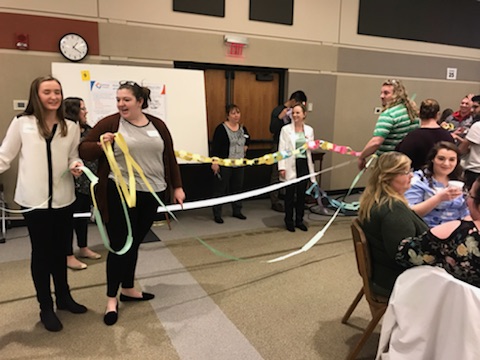Area Universities Collaborate on Interprofessional Communication Workshop for Healthcare Students

Malone University and several other local universities collaborated to place Northeast Ohio at the forefront of Interprofessional Education with a unique workshop tailored to building communication skills among healthcare students and future providers.
On Friday, approximately 240 healthcare students from Malone University, Mercy College, Northeast Ohio Medical University, Summa Health System, Ursuline College, The University of Mount Union, The University of Akron, Walsh University, and Youngstown State University gathered on the campus of Northeast Ohio Medical University (NEOMED) to participate in faculty-designed workshops that encouraged students from all divisions to work together. Participants included students enrolled in medicine, nursing, advanced practice nursing, nutrition, physical therapy, exercise science, social work, or EMS. Seven nursing faculty and 28 undergraduate BSN students participated. These conferences are held several times each year; during the Fall, MSN students and faculty attend as well.
"Participating in the simulation can result in better healthcare because professionals collaborate in a team work environment to develop a more comprehensive plan of care," said Lora Wyss, Professor of Nursing at Malone and also the Director of Community & Cross Cultural Engagement. "It teaches students the valuable skills of team communication techniques to reduce medical errors and improve patient care, while learning what each profession contributed to patient-centered care and practice through mock case studies that simulated real-life experiences. This workshop helps to break down silos for better communication and coordinated care of our patients."
The workshop also helps to increase the comfort level of students in their future interactions with physicians and healthcare practitioners from other disciplines. The program included poster presentations, case studies, and interactions in a patient simulation.
"It is those kinds of experiences that move the students from textbook case studies to real life experience," Wyss said.
